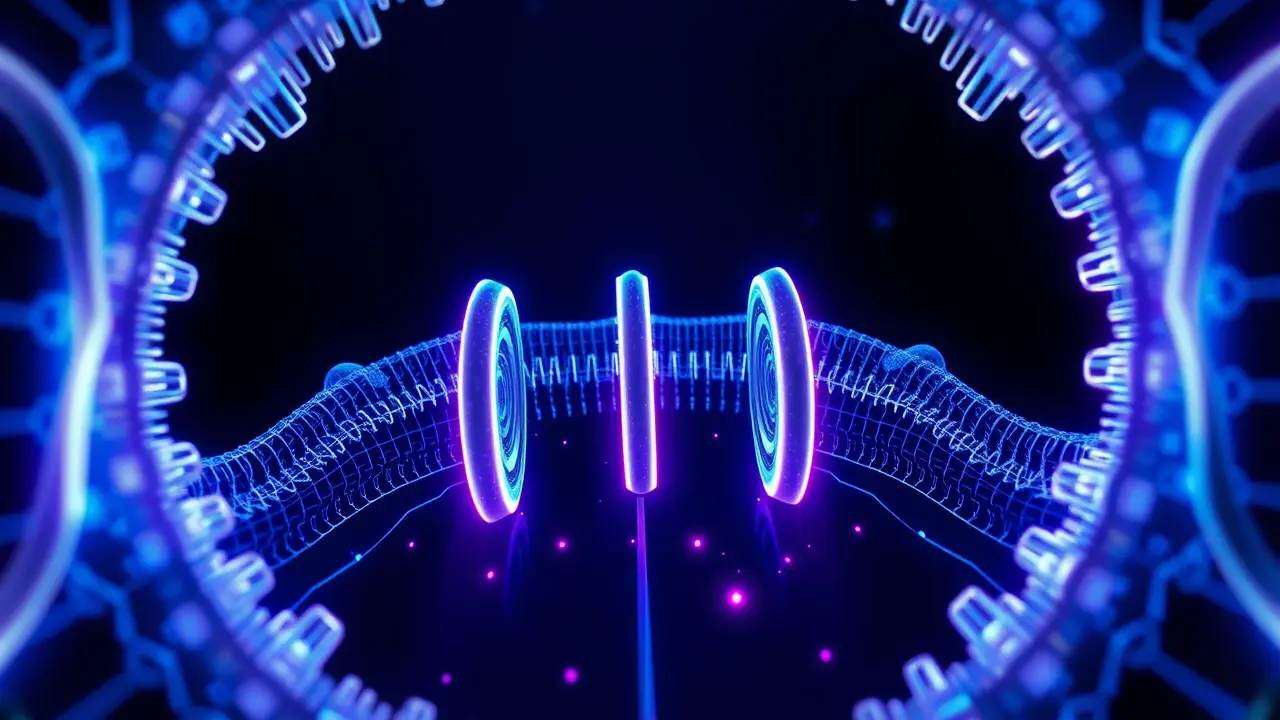
Scienceneuroscience
Brain-like learning found in bacterial nanopores
KE
Kevin White
3 hours ago7 min read
In a stunning convergence of biology and computational science, researchers at Switzerland's École Polytechnique Fédérale de Lausanne (EPFL) have cracked one of nanotechnology's persistent puzzles—the erratic behavior of biological nanopores—while simultaneously engineering versions that exhibit primitive learning capabilities reminiscent of neural processes. These nanopores, essentially molecular-scale channels found in bacterial cell membranes like that of aerolysin from Aeromonas hydrophila, have long been utilized in DNA sequencing and molecular sensing, yet their occasional unpredictability has hampered more sophisticated applications.The EPFL team's breakthrough came from meticulously mapping how two critical phenomena—rectification (the diode-like control of ion flow) and gating (the opening and closing of the pore)—arise not from random fluctuations but from precise electrostatic interactions between the pore's internal charged residues and passing ions. By systematically engineering these charge distributions, the scientists didn't just solve a basic science problem; they constructed nanopores whose conductivity can be modulated by previous ionic activity, creating a form of ionic memory.This 'learning' mechanism, where the pore's future behavior depends on its past ionic exposure, mirrors the synaptic plasticity fundamental to neural networks in the brain, where connections strengthen or weaken based on experience. The implications are profound, potentially paving the way for ion-based processors that operate with the energy efficiency and parallel processing capabilities of biological systems, a stark contrast to the power-hungry silicon chips of today.This work sits at the vanguard of neuromorphic computing, a field desperately seeking alternatives to the von Neumann architecture, and suggests a future where hybrid bio-electronic systems could perform complex, adaptive computations. Imagine diagnostic sensors that learn to identify specific disease biomarkers with increasing accuracy or environmental monitors that adapt to changing pollutant levels.The research, while foundational, connects deeply with ongoing efforts in synthetic biology to create cellular logic gates and even primitive neural networks within single cells, pioneered by labs at MIT and Stanford. However, significant hurdles remain, including scaling these nanopores into dense, reliable arrays and achieving the long-term stability required for practical devices.As Dr. Aleksandra Radenovic, a lead researcher in EPFL's Laboratory of Nanoscale Biology, noted in a related commentary, 'We are moving from simply observing biological structures to actively reprogramming them for human-defined tasks. ' This isn't merely an incremental step in nanoscale engineering; it's a conceptual leap toward blurring the line between biological intelligence and human-made computation, potentially heralding a new era of bio-inspired adaptive systems that learn and evolve.
#lead focus news
#bacterial nanopores
#brain-like learning
#bio-inspired computing
#ion-based processors
#aerolysin
#EPFL research
Stay Informed. Act Smarter.
Get weekly highlights, major headlines, and expert insights — then put your knowledge to work in our live prediction markets.
Related News
© 2025 Outpoll Service LTD. All rights reserved.
